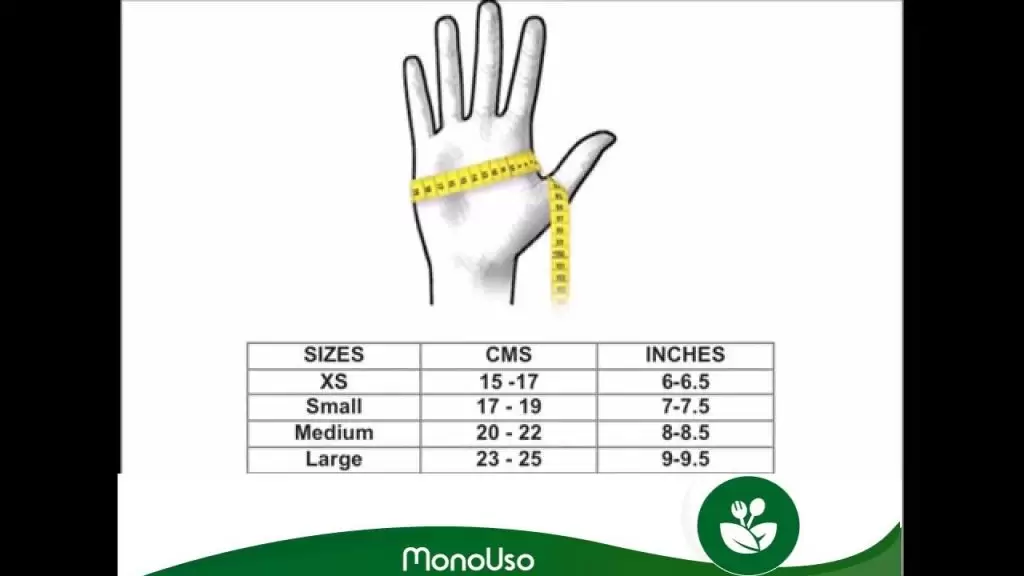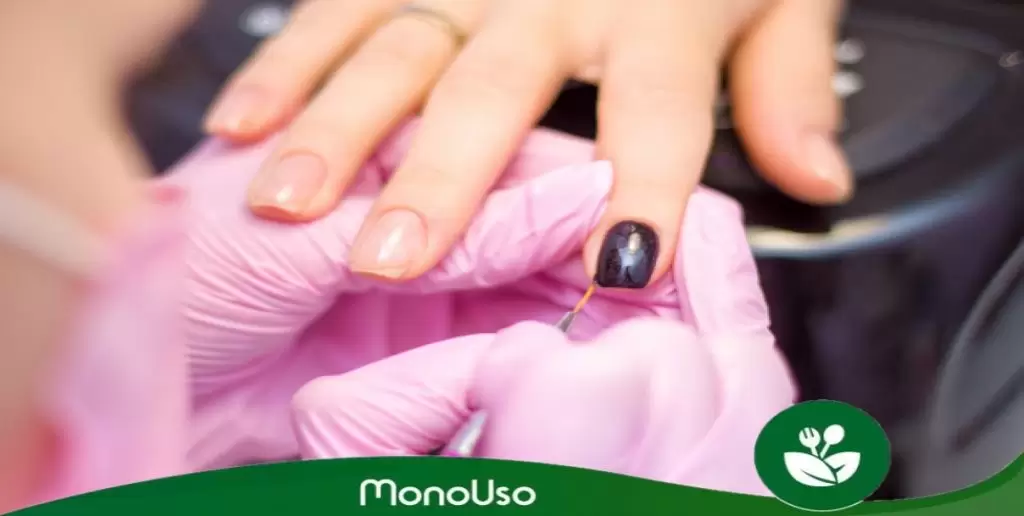Choosing the correct size of disposable gloves not only enhances comfort during use but also provides the right protection and optimises performance.
An incorrect size can cause tearing, discomfort or even reduce tactile sensitivity when performing tasks.
That’s why, before buying latex, nitrile or vinyl gloves, it’s essential to know which size suits you best.
In this article, we provide the key points to help you choose the correct size of disposable gloves, along with a step-by-step guide on how to measure your hand, interpret glove sizes and what to consider depending on the type of material.
Measurement Guide for Choosing Disposable Gloves
How to Measure Your Hand for Gloves
To determine your exact glove size, you need to measure the circumference of your hand for numerical sizes and the width of your hand for letter-based sizes.
To measure the circumference of your hand:
- Extend your hand and spread your fingers slightly.
- Wrap a measuring tape around the palm, just below the knuckles (excluding the thumb).
To measure the width of your hand and determine your glove size:
- Place your hand flat on a smooth surface, with your fingers slightly apart and your palm facing upwards.
- Place the measuring tape or ruler at knuckle level, without including the thumb.
To measure the length of your hand, which is often used as a reference for glove sizing:
- Lay your hand flat on a surface.
- Mark the tip of your middle finger and the base of your palm, then measure the distance between both points.
Always measure your dominant hand, as it is usually slightly larger.
Sizing Systems for Disposable Gloves
When choosing disposable gloves, you may find two sizing systems: numeric and alphabetic.
- Numeric sizing system (from size 6 to 10): uses the hand width measured in centimetres or the circumference measured in inches as a reference. One inch equals 2.54 cm, so knowing this measurement makes it easier to find the right size.
- Letter sizing system (S, M, L, XL, XXL): is based on the hand circumference measured in centimetres. It also closely corresponds to the hand length from the ring finger to the base of the palm.
Each manufacturer may slightly vary these ranges, so it’s always advisable to check the specific size guide for each product before purchasing.
Indicative Glove Size Chart
Although each manufacturer has its own guide and measurements may vary slightly, the following equivalences are a good reference:
Indicative Glove Size Chart
Although each manufacturer has its own guide and measurements may vary slightly, the following equivalences are a good reference:
| Circumference of the hand | Equivalence of glove sizes |
| 16-18cm | XS |
| 18-20 | S |
| 20-22 | M |
| 22-24 | L |
| 24-26 | XL |
If your hand circumference falls between two sizes, it’s better to choose the larger one to avoid the glove being too tight and restricting movement.
Tips for Choosing the Right Size Depending on Glove Type
Thicker or Professional Use Gloves
For tasks requiring durable or double-layered gloves, it’s advisable to allow a small margin for movement, as long as it’s not excessive or uncomfortable.
When working for long hours, choosing a size slightly larger than the exact hand size may provide greater comfort.
Latex, Nitrile and Vinyl Disposable Gloves
All three disposable glove types are made from materials such as latex, nitrile and vinyl, each with specific characteristics that determine their fit and behaviour when worn.
Choosing the right size for each material is essential to ensure comfort, safety and efficiency.
- Latex gloves: made from natural rubber, they are highly elastic, durable and offer excellent tactile sensitivity, making them ideal for tasks requiring manual precision.
However, as latex is a snug and stretchy material, a size too small can cause pressure and fatigue, while a size too large can reduce grip accuracy. - Nitrile gloves: a hypoallergenic alternative to latex, recommended for food, cleaning and industrial sectors as they offer excellent resistance to punctures and chemicals.
When measuring your hand for these gloves, it’s best to opt for a size that fits closely without excessive tension, as nitrile gradually adapts to body heat. - Vinyl gloves: made from PVC, they are the most economical option and suitable for short tasks or minimal contact with liquids or chemicals.
Vinyl is less elastic than latex and nitrile, so it’s important not to choose a size that is too tight.
Selecting the right size according to the material enhances comfort, ensuring that the glove provides proper protection while maintaining hygiene and safety during every use.
Differences Between Men’s and Women’s Glove Sizes
Although sizes are defined by centimetres rather than gender, men’s hands generally have a larger circumference:
- Size M is typically standard for women.
- Size L or XL is more common for men.
In any case, the key is to follow the palm measurement, not the manufacturer’s label.
Factors Influencing Size Choice
- Elasticity of the material: nitrile is more flexible than vinyl.
- Frequency of use: if you need to change gloves frequently, prioritise ease of putting them on and taking them off.
- Working conditions: if you work in humid or hot environments, a looser size may be more practical.
At Monouso, you’ll find a wide range of disposable latex, nitrile and vinyl gloves available in different sizes, so you can always work with maximum safety and comfort.
Tips for Choosing the Right Size Depending on Glove Type
Frequently Asked Questions About Glove Sizes
For tasks requiring durable or double-layered gloves, it’s advisable to allow a small margin for movement, as long as it’s not excessive or uncomfortable.
When working for long hours, choosing a size slightly larger than the exact hand size may provide greater comfort.
Why is it important to choose the correct disposable glove size?
Because a glove that’s too large can slip or lose grip, while one that’s too small restricts movement and can tear easily.
How do I measure my hand correctly to find my size?
Measure the circumference of your palm just below the knuckles, excluding the thumb, and compare the result with a standard size chart.
What glove size should I wear if I’m a man?
It depends on the measurement of your palm. Generally, L and XL are the most common men’s sizes, but it’s best to measure your hand to confirm.




